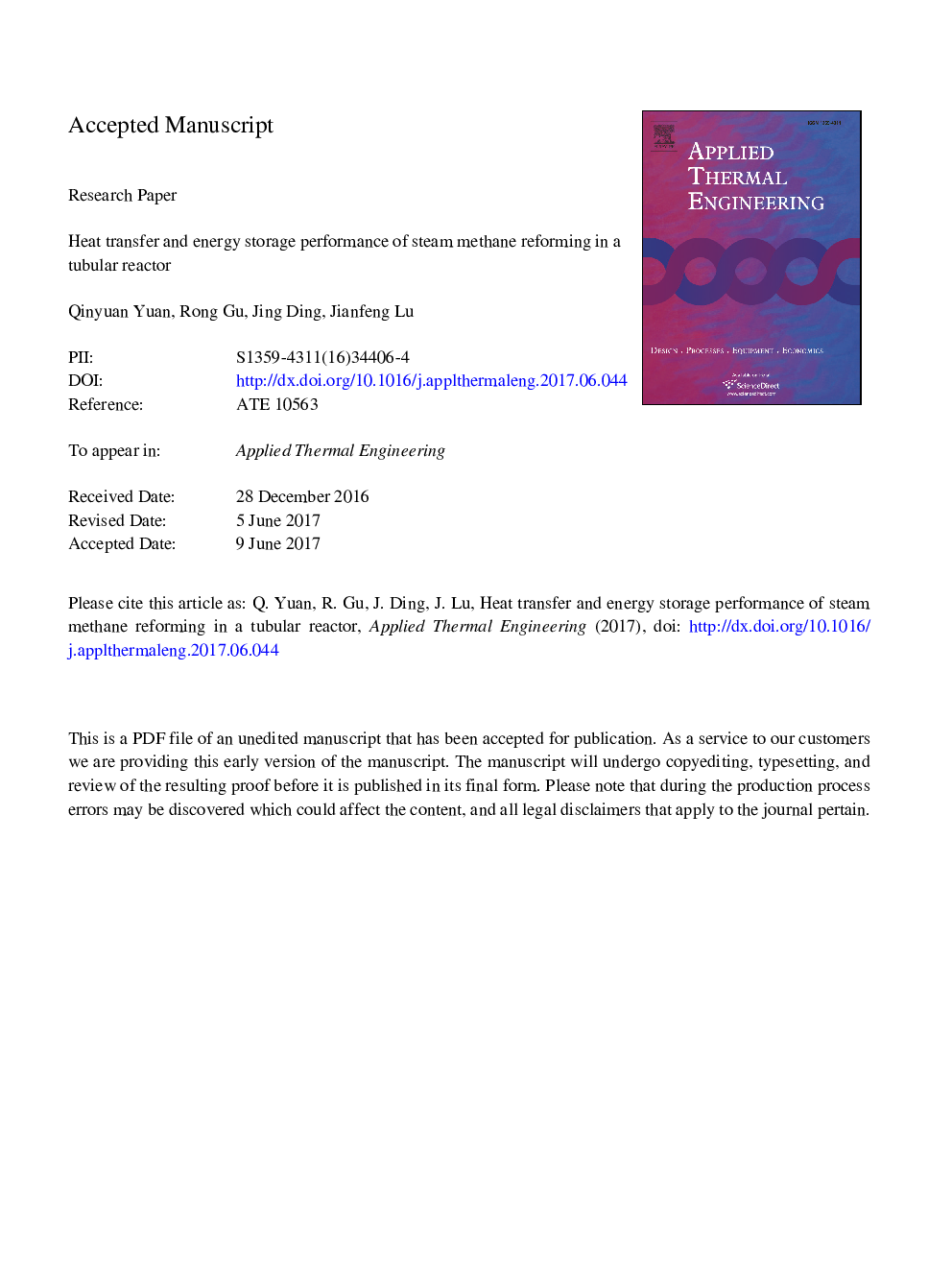| Article ID | Journal | Published Year | Pages | File Type |
|---|---|---|---|---|
| 4991215 | Applied Thermal Engineering | 2017 | 48 Pages |
Abstract
Energy storage performance of steam methane reforming in a tubular reactor is studied. According to the experimental results, high temperature thermal energy can be stored by steam methane reforming, and the thermochemical energy storage and sensible heat both have significant impacts. As the inlet flow rate is increased, the methane conversion decreases with the catalyst bed temperature and residence time dropping, while the efficiencies of thermochemical energy storage and total energy reach their maxima at optimal flow rates. Based on experimental validation, 3D flow and reaction model is developed using laminar finite-rate model to analyze steam methane reforming. Along the flow direction, the rates of main reaction and side reaction in catalyst bed first increase with the fluid temperate rising and then decrease with the decrement of reactant amount, so the reactor wall temperature has minimum near the front of bed for high chemical reaction rate. The thermochemical energy storage efficiency has maximum at optimal flow rate or optimal operating temperature, and associate maximum thermochemical energy storage efficiency and optimal flow rate increase with operating temperature rising. As a conclusion, low flow rate is suitable for low operating temperature, while higher one is suitable for high operating temperature. Based on maximum thermochemical energy storage efficiency, optimal reactor diameter and optimal bed porosity can be further derived.
Related Topics
Physical Sciences and Engineering
Chemical Engineering
Fluid Flow and Transfer Processes
Authors
Qinyuan Yuan, Rong Gu, Jing Ding, Jianfeng Lu,
